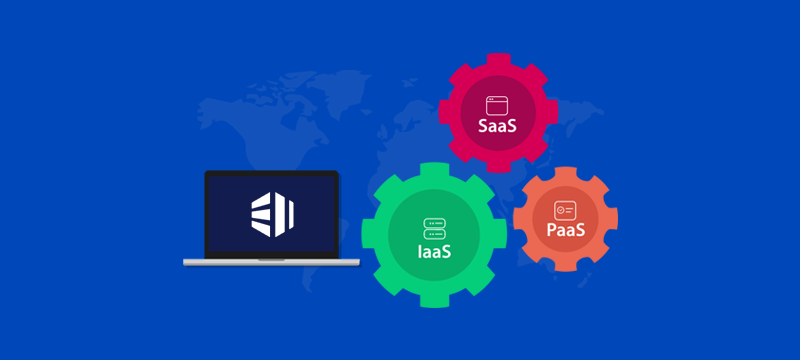Infrastructure as a Service (IaaS), Platform as a Service (PaaS) and Software as a Service (SaaS) are three different cloud services. To help you understand their similarities and differences, this post will look at what they are and what they are used for.
What are Iaas, Paas and Saas?
IaaS, PaaS and SaaS are three different types of cloud service that companies can purchase from a cloud vendor. One of the most frequently used cloud types is IaaS, which is a service that allows companies to rent cloud-based infrastructure, such as storage, servers and networking, to store data and run applications. IaaS is a managed service.
PaaS is a more specialised service that companies and developers can use to build, deploy and host new applications. As this is done in the cloud, most companies use PaaS for building customer-facing apps. The service includes both the cloud infrastructure (like IaaS) and the development platform.
SaaS is the most commonly used cloud service, and it is where software companies provide customers with cloud-based software solutions. Sold via subscription, these can be purchased directly from the software vendor or licenced through a cloud vendor. They include services like Office 356, Salesforce and Zendesk.
What is IaaS used for?
IaaS enables companies to build their own infrastructures without the need to buy hardware, build a data centre to house it or undertake the management of the physical environment. Instead, everything is stored on the vendor’s infrastructure and they manage the hardware, while the company is able to access and manage its system online. In this sense, IaaS can offer significant financial savings compared to in-house systems.
IaaS provides businesses with some significant benefits. Aside from not having to invest heavily in hardware, the cloud’s pay-as-you-go fee structure means that companies only pay for the IT resources they use. Combine this with the ability to instantly scale resources up or down on demand and it means organisations have greater control over their spending while having the confidence that, should they need more resources, they can be had at the click of a mouse.
Other advantages include being able to backup and restore quicker using cloud-based backups and DR solutions, 24/7 technical support, and if needed, taking advantage of bespoke managed service solutions.
What is PaaS used for?
PaaS is a solution that offers companies a framework with which they can develop their own cloud-based applications without needing to build or manage their own infrastructure. Once created, of course, the company then has the ideally configured infrastructure in place to run that application and can access additional and scalable resources for it to cope with increased demand.
PaaS platforms are secure, ideal for collaborative development and enable developers to access the growing number of web-based PaaS tools. As the apps are built in a cloud environment from scratch, companies don’t have to endure the challenges that can happen when building them in-house and then transferring them to the cloud – and this can dramatically speed up the final deployment. What’s more, all the cost-efficiencies that apply to IaaS, apply to PaaS in the same way.
What is SaaS used for?
SaaS provides businesses with cloud-based software that because it is hosted online by the vendor, can be accessed over the internet. This makes it ideal for remote working and collaboration, and also means that data and software don’t need to be downloaded to and installed on individual devices (although users can often do both). This can minimise the risk of data loss, improve data management and reduce the burden on IT staff who, with a non-SaaS solution, would need to licence, install, update and patch versions of each app for individual machines. Companies will also have a smaller burden on their own IT usage, as the processing and data storage take place on the vendor’s infrastructure.
SaaS products are also easy to set up, use and manage while being highly scalable. If the company grows, it can just take out a bigger package and new users can be given access easily. What’s more, if an employee leaves, access can be revoked just as simply. Additionally, SaaS products are patched and updated automatically by the vendor, reducing the chance of vulnerabilities.
The only potential disadvantage of SaaS is that the customer is reliant on the provider to ensure the software remains online. Although they are extremely rare, if there is an outage, there is little the company can do until the vendor is able to restore the service.
Conclusion
Hopefully, from reading this post, you’ll now have a clear understanding of what IaaS, PaaS and SaaS are, what companies use them for and why, and from this, will know the similarities and differences between them.
For more information about our cloud solutions, visit our Cloud Hosting or Enterprise Hosting pages.




1 Comment
This is exactly what I needed today. Thank you for brightening my day with your words.